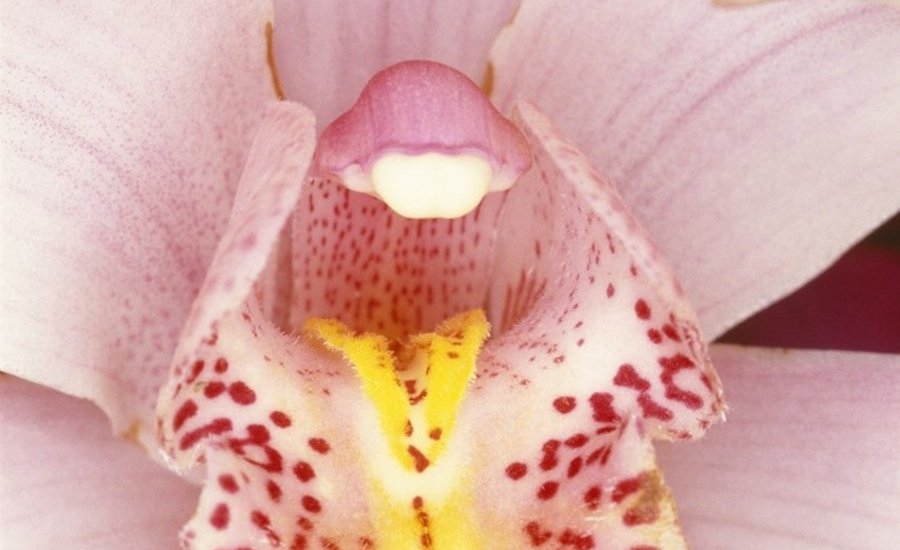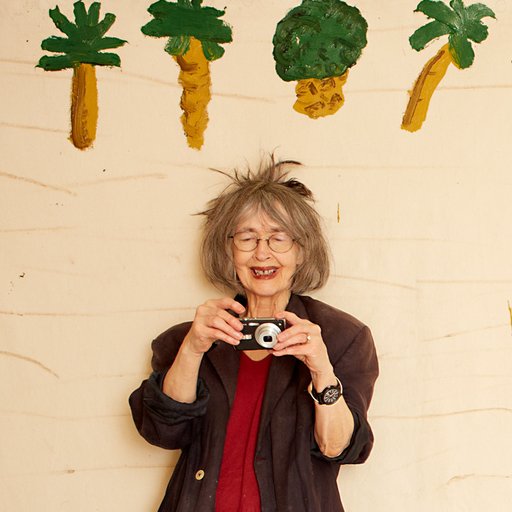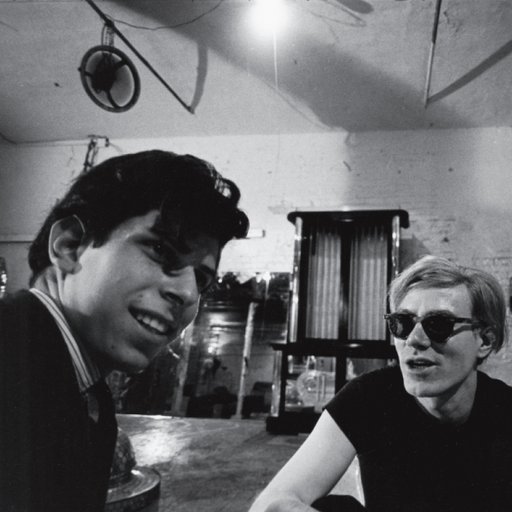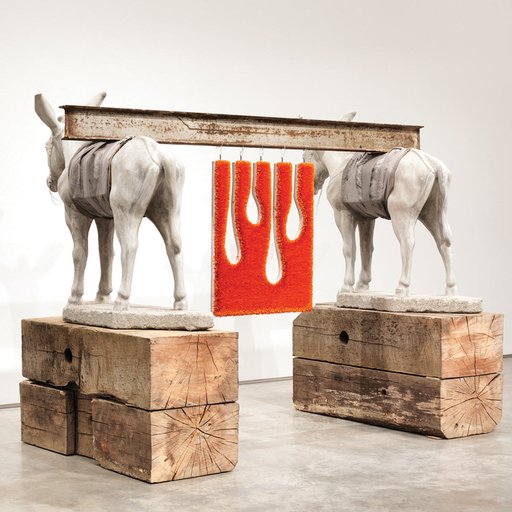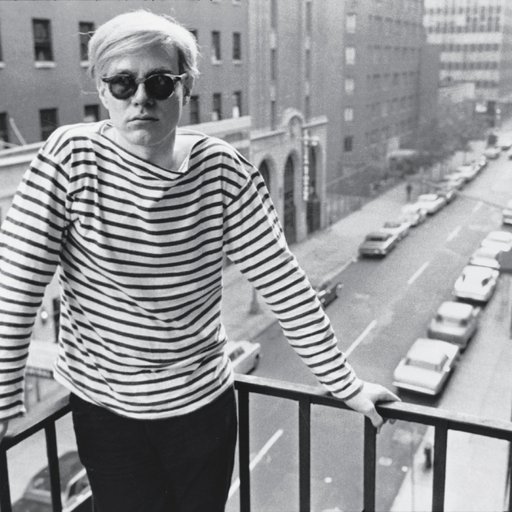Plant life has been linked to human sexuality since time immemorial—there’s just something about the mysterious whorls of petals and the turgid fecundity of pistils and stamens that get our minds racing to “private” matters we dare not speak aloud. It’s been a recurring theme throughout the history of art, one of the few truly universal motifs that hearkens back to our earliest myths and legends.
Artists working in the 20th and 21st centuries have been unable to resist plants’ endemic eroticism, as evidenced in Phaidon's new compendium of botanical artworks Plant: Exploring the Botanical World. Here, we take a look at nine works by some of the best-known artists of the past 100 years that highlight and expand the sensual symbolism of plants.
MAN RAY
Born 1890, Philadelphia, PA. Died 1976, Paris, France.
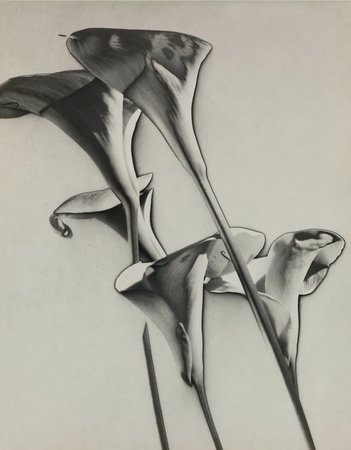
The low camera angle and diagonal cropped composition of Man Ray’s portrait of arum lilies (Zantedeschia aethiopica) enhances their ambiguous flattened, sculptural shapes and emphasizes the sensuality of the petals of this highly symbolic flower. Not actually a lily but an aroid, the plant has for centuries been associated with faith and purity. It is native to South Africa, where it was traditionally used to dress wounds—despite the fact that the plant is poisonous—but the arum lily (also known as the calla lily) was known to European botanists by the 1660s and is today one of the most popular ornamental plants in the world.
Man Ray’s photograph uses a technique discovered by his assistant and muse Lee Miller and known as solarization, which achieves a distinctive reversal of tones and dark outlines by exposing the photographic paper to light during developing. Such an experimental use of darkroom techniques helped to make Man Ray one of the most influential artists of the twentieth century. A key member of the Surrealist and Dada movements, his photographs—he also painted, sculpted, and made films—defined new territory, elevating the medium beyond the functional and commercial to become truly recognized as artistic.
GEORGIA O'KEEFFE
Born 1887, Town of Sun Prairie, WI. Died 1986, Sante Fe, NM.

The huge white flower fills nearly the whole canvas in this painting of jimson weed, Datura stramonium, a favorite flower of the renowned American artist Georgia O’Keeffe. O’Keeffe’s painting—the most expensive work ever by a female artist when it sold at auction in 2014 for over $44 million—was one of a number she made of the same subject. As in her other close-up flower paintings, here O’Keeffe combines an awareness of abstract form with a precise observation of detail and the use of bold colors and shapes (she always denied Freudian interpretations that found coded representation of genitalia in her images of flowers such as irises).
Jimson weed grew in O’Keeffe’s back garden in Santa Fe, New Mexico, which she visited frequently from the late 1920s before moving there permanently in 1946. The many names of this member of the nightshade family—including devil’s ladder, devil’s trumpet and mad apple—point to its traditional use as a powerful narcotic. The name “Jimson” is a corruption of Jamestown, the town in Virginia where, in 1676, British troops ate the leaves in a salad. According to contemporary accounts, they became distracted, giggling and pawing at one another, and had to be locked up to prevent them from harming themselves.
BRASSAÏ
Born 1899 Brassó, Austria-Hungary (now Romania). Died 1984, Beaulieu-sur-Mer, France.

The prolific Hungarian-born photographer Brassaï gives this close-up image of the reproductive organs of a tulip the same erotic quality that he gives the lovers in his better-known pioneering photographs of the streets of Paris. Pollen is scattered over the shiny petals and the stigma appears to glow with fecundity. The flower is in full bloom, but its moment has almost passed. Its precise stage of development is unclear, and that is part of Brassaï’s intention: “For me the photograph must suggest rather than insist or explain.”
Brassaï—who was born Gyula Halász—is hailed as the father of street photography thanks to his grainily textured photographs of the nocturnal demi-monde of 1930s Paris. Having studied fine art and worked as a journalist, he did not pick up a camera professionally until he was thirty years old. Once he started, however, he did not stop. He captured both the sordid and smart sides of his adopted city: nightclubs, parties, dances, lovers, and foggy, damp streets, as well as such contemporary writers as Thomas Mann, Colette, and Lawrence Durrell and artists including Pablo Picasso, Georges Braque, and Salvador Dalí. His obsession with the city’s graffiti led to a myriad of photographs of walls.
NOBUYOSHI ARAKI
Born 1940, Tokyo, Japan. Lives and works in Tokyo, Japan.

At the bottom of this close-up of a pink Cymbidium orchid by the Japanese photographer Nobuyoshi Araki is a fragile sprig of the popular bouquet-filler Gypsophila. Although orchids and bridal bouquets carry suggestions of innocence and femininity, Araki’s tight focus on the petals makes the flower more reminiscent of the genital imagery of, say, the flower paintings of Georgia O’Keeffe.
The erotic potential of flowers is nothing new in art, but for the prolific Araki—he has published more than 350 books—female eroticism is a key part of his life’s work. But Araki’s flower photographs also contain a more spiritual element, wabi-sabi. This tenet of Taoist and Zen Buddhist belief reflects the idea that an object’s inherent aging must be understood in order to appreciate its beauty (loosely translated, wabi means “simplicity;” sabi can be understood as the patina time gives an object). Araki’s image already implies that the flower’s beauty is transient and will fade. For him, this makes the flower a worthy subject for a botanical still life. Araki’s approach goes against much of modern Japanese culture, however, which is obsessed with the new.
ROBERT MAPPLETHORPE
Born 1946, Floral Park, NY. Died 1989, Boston, MA.

There is something unsettling about this platinum print of a calla lily (Zantedeschia aethiopica). This is no botanical study. Instead, the tightly composed image concentrates on revealing physical beauty and fragility, emphasizing the contrast between the pure white of the flower and the dark background. This image, like much of the rest of American photographer Robert Mapplethorpe's body of work, also carries erotic overtones of male and female sexuality, with its concentration on the rigid upright pistil enfolded by the softer surrounding brilliant white spathe.
Though floralsubjects, which were a major focus of his artistic output, are associated with Mapplethorpe, he is sometimes better known for his sensitive and individual portraits. His subjects included many of his friends, including fellow artists and composers, and he also produced many self-portraits. His early work was with a Polaroid camera and he later used a medium-format Hasselblad. Native to southern Africa and widely naturalized and cultivated elsewhere, the calla lily is in fact not a lily at all, but an aroid. It is a popular garden plant and the cut flowers are used in floral displays and as a symbol of purity at weddings and funerals.
HELENE SCHMITZ
Born 1960, Stockholm, Sweden. Lives and works in Stockholm, Sweden.

This somewhat surreal-looking image shows Acacia saligna covered with brilliant yellow flowers; its seeds are distributed by ants. The photograph was taken by the Swedish photographer Helene Schmitz as part of a project published in 2007 to coincide with the tercentennial celebration of the birth of her countryman the eighteenth century botanist Carl Linnaeus. The book discusses Linnaeus’s “Sexual System” of classification and illustrates its twenty-four categories with close-up views of selected plants from each Linnaean category or class, photographed against a black background in order to highlight color and detail, including the reproductive parts.
Taken with Georg Dionysius Ehret’s plate depicting the twenty-four classes (1736), Schmitz’s photographs bring these classification categories to life, showing how the number of stamens and pistils (plant reproductive organs) can be counted and providing real-life examples of Ehret’s icons. The Acacia shown here was assigned to the penultimate category, Polygamia, which contains plants having unisexual and bisexual flowers on the same individual plant, or on different plants of the same species. Schmitz was already taking close-range views of plants when she read Linnaeus’s work and was inspired to make this book, which won several awards in Sweden in 2007.
CHERYL POWER & ANDREW SYRED

Recalling the delicacy and pastel tones of a scientific illustration from a century ago, this cross section revealing the sexual organs of a forget-me-not (Myosotis arvensis) was in fact produced by some of the latest technology in botanical illustration: the scanning electron microscope (SEM). For more than twenty years Andrew Syred has been using the SEM to create images of the microscopic world magnified up to 2,500 times, from the scales on a butterfly’s wing to a gecko’s foot and an individual grain of pollen. The SEM produces only black-and-white images, however, and they are then painstakingly colored on the computer by Syred’s partner, Cheryl Power.
The forget-me-not, a genus containing more than 2,000 species, has a rich symbolic history that belies its humble appearance: it has customarily been seen as a symbol of lasting love and remembrance. In Newfoundland, Canada, it is worn to remember the dead of the world wars. To produce this SEM image, the sample was carefully dried—to prevent it being damaged in the vacuum where scanning takes place—and the outer petals removed before it was spattered with a layer of gold to help conduct electrons. However, the drying process and the vacuum create an inevitable distortion in the sample, making this a painfully laborious process with a high wastage rate.
LEE KWANG-HO
Born 1981. Lives and works in Seoul, South Korea.

In this highly enlarged, hyper-realistic painting, the red mistletoe cactus Rhipsalis hoelleri is deliberately made unfamiliar, revealing an alien and unsettling beauty that reflects the fascination these succulents exercise on the imagination through their varied and unusual forms and their adaptation to extreme conditions. This particular cactus is an endangered Brazilian species, which is threatened with extinction. The exaggerated scale is reminiscent of the intense scrutiny of flowers by Georgia O’Keeffe, and, as with her work, has been interpreted in terms of sex and desire.
A native of Seoul, South Korea, Lee Kwang-Ho has developed his practice out of similarly detailed portraits of human subjects that pay minute attention to the texture of clothes and skin, and his cactus paintings are just as much an articulation of personality and presence. He works from photographs using a variety of painstaking brushwork techniques to render these images. Lee’s hyper-realistic style sets up multiple layers of illusion, seeming at once to deny the lengthy process of painting and to present the subject as it truly is in a moment, and yet magnified to lend it a frozen monumentality. But his depiction also points to a deeper reality, a reminder that we share the natural world with living things that are utterly different from us.
E.V. DAY
Born 1967, New York, NY. Lives and works in New York City.

The delicate tracery of this three-dimensional image of a waterlily might resemble a kind of mathematical exercise in angles and tension; that is certainly part of the point. But it is also an echo of earlier, more famous images of waterlilies—some of the most well-known flower paintings ever produced those painted by Claude Monet in his celebrated garden at Giverny outside Paris in the 1890s.
In 2010 the New York installation artist E.V. Day spent three months in Giverny as artist in residence, and was handed a key that allowed her to enter the garden at any time, even when it was closed to visitors. She was fascinated by the famous waterlilies, and began to contemplate “transporting” them back to the United States in a process similar to that of the transporter on the television series Star Trek, which dissolved people or objects in one location to reconstitute them in another. Day used a computer program to render a three-dimensional model of a flower in curving wire, which she colored pink (there is also a monochrome version) and enclosed in layers of resin to represent the six stages of transportation. Day equates the process to stretching and shaping fishnet stockings, a material she often uses in her work.
[related-works-module]











